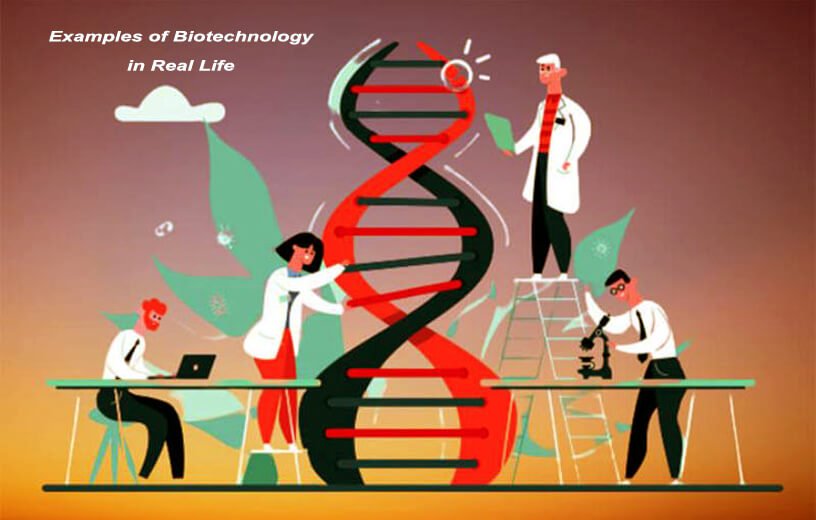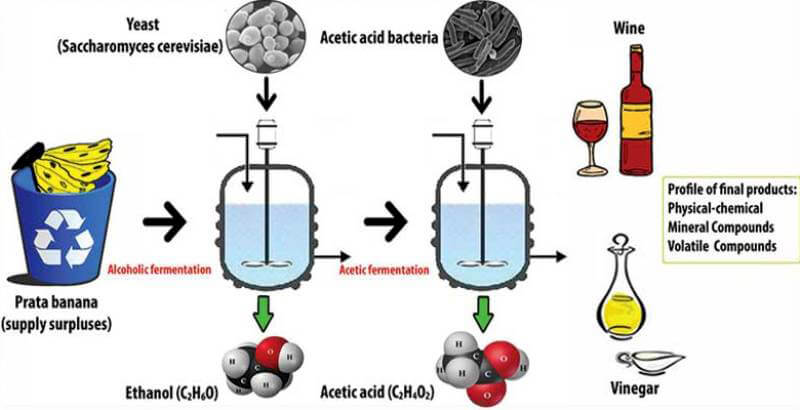- Water Testing Meters
- Anemometer
- Length & Distance Meter
- Multimeter & Clamp Meter
- Light and Sound Meter
- Slide Calipers & Screw Gauge
- Thermometer & Hygrometer
- Milk Testing Meters
- Paper, Grain & Wood Testers
- Stopwatch & Timers
- Soil Testing Meters
- Refractometers & Analyzer
- Magnetic Compass
- Tachometer & Megger
- Thickness & Dia-Meters
- Other Meter And Accessories
Examples of Biotechnology in Real Life

Biotechnology is a field of science that uses biological systems, living organisms, or their derivatives to create products useful to mankind. In this article, we will see some examples of Biotechnology in Real Life.
Biotechnology helps us to solve many problems such as infectious diseases, improving food quality, scarcity of fossil fuels, etc.
As the population increases and natural resources decrease, biotechnology helps us find alternative sources.
Biotechnology plays an important role in meeting the needs of our daily life. Biotechnology has long served almost every field like healthcare, the food industry, winemaking, dairy products, the textile industry, and bioremediation.
Today, when the entire world is suffering from Covid-19, biotechnology is playing an important role in developing vaccines.
Let’s go to see some Examples of Biotechnology in Real Life:
(1) Genetically Modified Crops

Biotechnology plays an important role in the improvement of natural fibers like cotton, wool silk, etc. It also helps in improving the yield and quality of crop production by creating insect or herbicide-resistant crops.
Genetically modified foods are created by altering their DNA through genetic engineering. Some examples of Generically Modified foods are Bt crops, golden rice, etc.
(2) Alcohol Production
The biotechnological process of alcoholic fermentation achieved by certain bacteria and yeasts is widely used to produce alcohol. Raw materials for alcohol production are starchy crops such as barley, wheat, rice, sugarcane, or corn.

Fermentation is the process in which yeast converts sugar into alcohol (ethanol) and carbon dioxide (CO2). In the presence of oxygen, yeast breaks down glucose (sugar) molecules into two molecules of pyruvic acid and releases carbon dioxide and water as byproducts. These two molecules of pyruvic acid are then reduced to ethanol and CO2 under anaerobic conditions. Some bacterial species such as Zymomonas mobilis can also perform alcoholic fermentation. Alcohol fermentation by the yeast Saccharomyces cerevisiae is very common and well-known, but Z. mobilis is also used industrially as a starter for ethanol production. Wine is formed through the fermentation of grapes (Vitis vinifera).
Winemaking involves two main biotechnological processes, alcoholic fermentation, and malolactic fermentation. In alcoholic fermentation, the sugar present in the fruit is converted to ethanol and CO2 followed by malolactic fermentation by the mostly red wine lactic acid bacteria, Oenococcus oeni. This process converts malic acid (the harsh taste) to creamier lactic acid and raises the pH. It is necessary for the inactivation and flavor modification of the wine.
(3) Skin Care Products
Biotechnology has played an important role in cosmetology and aesthetic medicine. A prominent example of biotechnology products in everyday life is Botox. Botox is a protein produced by the bacterium Clostridium botulinum. It paralyzes nerve cells, thereby reducing facial wrinkles.
Hyaluronic acid is also a very important ingredient in anti-aging skin care. It is naturally present in the human body. In the laboratory, hyaluronic acid is formed by the fermentation of glucose by certain bacteria such as Streptococcus zooepidemicus, Escherichia coli, and Bacillus subtilis under the right temperature and pH.
(4) Detergent Enzymes | Examples of Biotechnology
Conventional detergents have been overridden by detergent enzymes, a product of biotechnology. These detergents contain enzymes like proteases, lipases, and amylases which help in removing blood, oil, etc. stains.
(5) Vaccine Production
Biotechnology has played an important role in developing vaccines against various deadly diseases. Vaccines are made of a dead or inactivated pathogen, one of its surface proteins, or a toxin produced by the pathogen. Vaccinations trigger our immune system, which results in the production of antibodies. These antibodies circulate in the blood for a long time as memory antibodies and if the said pathogen attacks in the future, the memory antibodies fight against it.
There are also many more examples of biotechnology in real life, like – Production of Antibiotics, Bioremediation, the Paper Industry, Dye Manufacturing, Lactose-free Milk, Bakery Products, Dairy Products, Biofuels, Bioethanol, Biodiesel, Biogas, etc.

